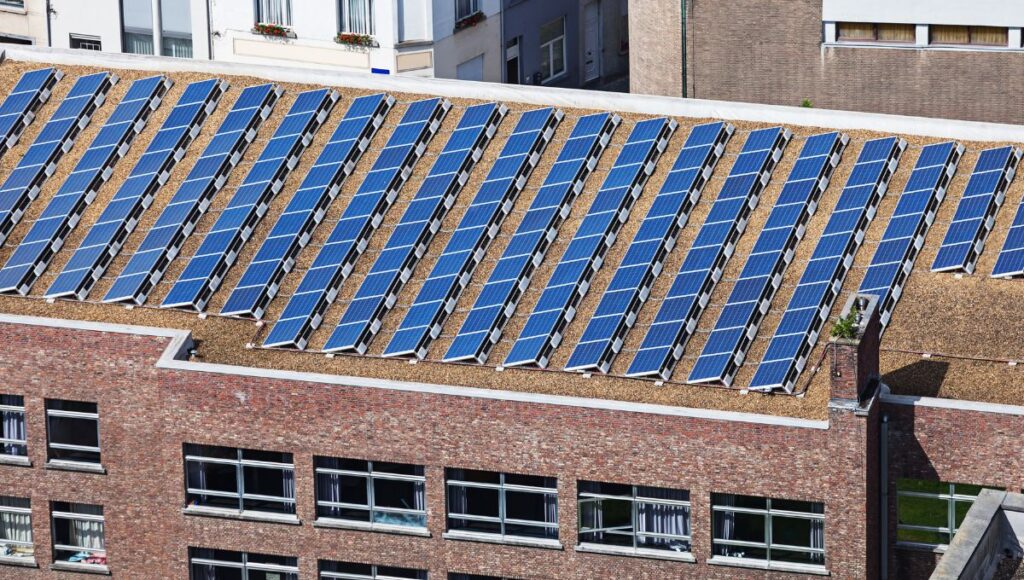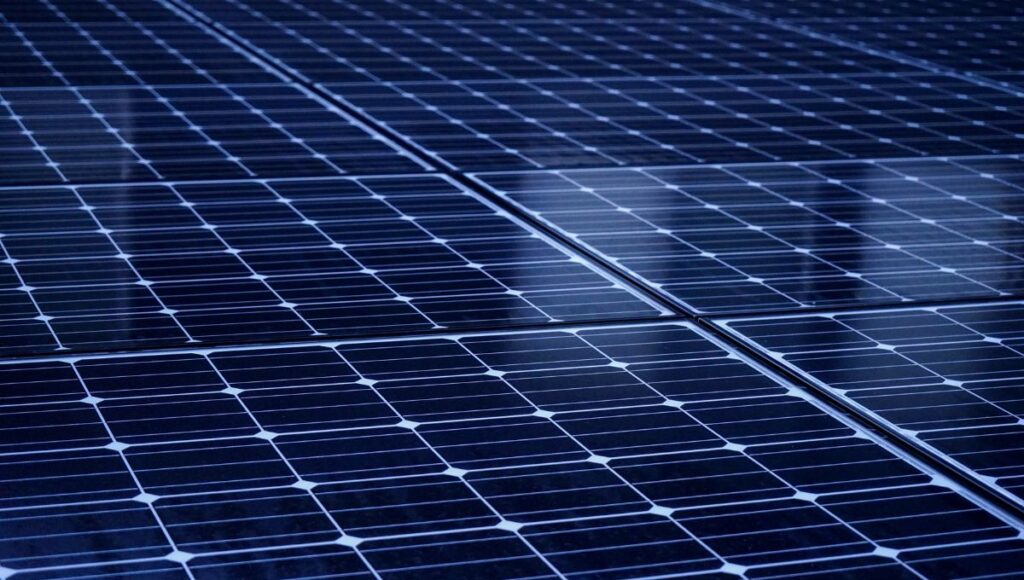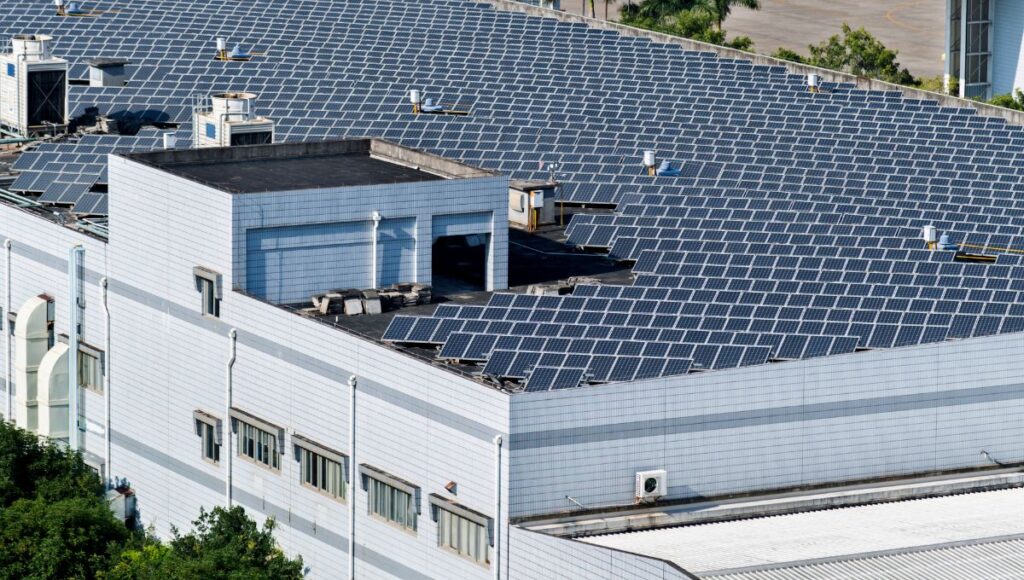Can you put solar panels on a listed building? How does preserving history balance with the need for sustainable energy solutions? These are common questions for property owners looking to reduce their carbon footprint while respecting heritage rules.
The direct answer is yes, you can install solar panels on a listed building, but it’s not straightforward. You will need planning permission and may face restrictions to maintain the building’s character and historical value. Every case is unique, so consultations with local authorities are essential.
Installing solar panels on a listed building requires careful planning and collaboration. By working with heritage and conservation experts, you can find solutions that respect your property’s history while paving the way for renewable energy adoption.
Table of Contents
What are the rules for listed buildings and solar?
When installing solar panels on listed buildings, ensuring compliance with regulations is essential. These rules aim to protect the building’s historical and architectural significance. Owners must acquire planning permission, and solutions need to minimize visual and structural impact, safeguarding the property’s unique charm.
1. Obtaining Planning Permission
Planning permission is vital before any installation. Local authorities will assess the potential effects of the solar panels on the building’s appearance and heritage value. Early communication with officials ensures a smoother process.
2. Minimizing Visual Impact
Solar panels should be discreetly placed to maintain the structure’s visual integrity. Options like non-reflective panels or positioning them on less visible roofs can help blend them harmoniously with the building.
3. Consulting Conservation Experts
Heritage and conservation consultants can offer tailored advice. Their experience aids in finding renewable energy solutions that respect both practical energy needs and the preservation of the building’s character.
Can heritage and solar energy truly coexist peacefully?

Yes, heritage and solar energy can coexist when careful planning and innovative solutions are applied. By respecting architectural value and adopting modern, discreet technologies, it’s possible to balance sustainability with preservation, ensuring a harmonious integration of solar panels into heritage properties.
1. Strategic Solar Panel Placement
- Install panels on less visible or secondary roof areas.
- Use remote placement options like detached solar installations.
- Position panels to avoid obscuring key heritage features.
- Ensure the placement aligns with the building’s original design.
- Work closely with officials for site-specific recommendations.
2. Compatible Solar Technology
- Choose non-reflective panels that reduce visibility and glare.
- Opt for colored panels matching the building’s appearance.
- Consider thin-film panels for minimally invasive applications.
- Explore advanced photovoltaic tiles that mimic traditional roofs.
- Stay updated on emerging preservation-friendly solar innovations.
3. Collaboration with Experts and Authorities
- Consult local heritage bodies for compliance and input.
- Hire specialists in solar integration for sensitive properties.
- Engage conservation architects for historically appropriate solutions.
- Gain guidance from renewable energy specialists for efficiency.
- Prioritize collaboration for eco-friendly, heritage-respecting outcomes.
How to gain permission for solar on historic properties?
Gaining permission to install solar on historic properties requires thorough planning, compliance with local regulations, and collaboration with key stakeholders. By respecting heritage preservation guidelines and fostering open communication, property owners can achieve solutions that balance sustainability with historical integrity.
1. Research Local Regulations and Guidelines
Start by understanding local heritage preservation rules and building codes. Review requirements for alterations to historic properties and consult online resources or local offices. This ensures the proposed solar installation aligns with legal and preservation standards.
2. Prepare a Detailed Proposal
Submit a comprehensive plan that includes designs, materials, and the solar technology to be used. Highlight how the installation will minimize visual impact and preserve the property’s historic features. A well-documented proposal can help facilitate approval.
3. Engage with Authorities and Stakeholders
Work with local heritage bodies, planning committees, and community representatives. Building positive relationships and addressing concerns early will ease the approval process. Their input can also help refine your project for better compliance and sensitivity.
What steps ensure a balanced preservation-energy approach?

Achieving a balance requires careful planning, collaboration, and adherence to guidelines. By respecting historical authenticity, adopting suitable technology, and working with local stakeholders, a property’s heritage can be preserved while incorporating sustainable energy solutions. Below are the key steps explained under guiding principles.
1. Respect Historical Integrity
Maintain the authenticity and appearance of the historic site.
- Use solar designs blending seamlessly with the architecture.
- Avoid installations altering historic features or landscapes.
- Research under visible placement options like rooftops or grounds.
- Prioritize preserving the feel of historical cultural value.
- Document changes to ensure future restoration is possible.
2. Adopt Technology That Minimizes Impact
Select solar solutions designed for historical building compatibility.
- Choose non-intrusive, flexible solar panels and adhesives.
- Explore thin-film technologies ideal for historical structures.
- Use reversible mounting systems without permanent infrastructure damage.
- Leverage modern, transparent solutions for enhanced visual outcomes.
- Stay updated with emerging technologies improving preservation adoption.
3. Collaborate with Stakeholders for Effective Planning
Work together with professionals, authorities, and community members.
- Organize early meetings with heritage boards and committees.
- Address local concerns regarding visual and structural impacts.
- Incorporate feedback into plans before submitting proposals.
- Highlight sustainability goals alongside preservation commitments.
- Build mutual trust to streamline approval and partnerships.
Can installing solar improve sustainability without losing charm?
Installing solar systems on historical buildings can significantly enhance sustainability while preserving their unique character. Through innovative technology, careful planning, and collaboration, these projects strike a balance between environmental responsibility and architectural heritage, ensuring that charm and functionality coexist harmoniously.
1. Use Discreet Solar Technologies
Modern solar solutions, like thin-film panels and transparent photovoltaic glass, blend seamlessly into historical designs. These subtle options ensure energy generation without altering the building’s visual appeal, allowing the original charm to remain intact.
2. Focus On Reversible Installations
Reversible mounting systems minimize permanent changes to structures, preserving historical integrity. These systems can be removed or replaced without causing damage, offering flexibility for future updates or changes in sustainability strategies.
3. Combine Sustainability with Heritage Goals
Highlighting the intersection of green energy and heritage preservation fosters support from stakeholders. Demonstrating how sustainable practices complement the conservation of cultural landmarks creates a shared vision and promotes successful project outcomes.
What experts help with listed building solar installations?
Specialists in solar installations for listed buildings ensure projects align with both sustainability goals and heritage conservation. They bring expertise in design, technical implementation, and compliance with regulations to maintain the building’s historical value while introducing renewable energy solutions.
1. Heritage Conservation Specialists
Heritage experts focus on preserving the building’s historical authenticity.
- Conduct historical assessments to guide sustainable design approaches.
- Recommend materials matching the building’s original architectural tones.
- Ensure no irreversible damage to listed structures occurs.
- Collaborate with architects to integrate heritage and solar goals.
- Provide expertise in navigating heritage protection laws efficiently.
2. Solar Energy Consultants
Solar consultants design efficient systems suited for historical buildings.
- Assess the feasibility of solar installations without visual intrusions.
- Recommend technologies suitable for sensitive historical environments.
- Ensure energy systems maximize renewable utilization effectively.
- Customize designs blending energy needs with architectural styles.
- Oversee installation to maintain operational safety and compliance.
3. Legal and Regulatory Advisors
Regulatory advisors manage compliance with heritage and planning regulations.
- Interpret regional guidelines for listed property solar installations.
- Prepare necessary documentation for permissions and consultations.
- Address unique challenges posed by heritage preservation mandates.
- Coordinate with local authorities ensuring project approvals proceed.
- Mitigate risks of non-compliance through thorough project reviews.
Conclusion: Can you put solar panels on a listed building?
Integrating solar energy into historical properties is a delicate process that requires expert planning. By partnering with architectural specialists, solar consultants, and legal advisors, you can balance preserving history with adopting sustainable solutions. With smart design and compliance, solar installations can boost energy efficiency while honoring your property’s heritage. Start your renewable energy journey today and build a greener future without losing the charm of the past.
FAQ
Q.NO.1 Can you put solar panels on a listed building near?
Yes, you can, but there are rules to follow! Work with experts to create a solution that honors the building’s history while achieving sustainability goals.
Q.NO.2 Solar panels on listed buildings UK?
Installing solar panels on listed buildings in the UK is possible with permissions and careful planning to respect the building’s heritage.
Q.NO.3 Can you put solar panels on a listed building in Scotland?
Just make sure to obtain the necessary permissions and work with professionals who can design an installation that complements your building’s unique character.

